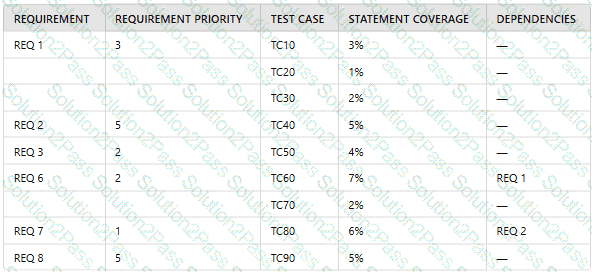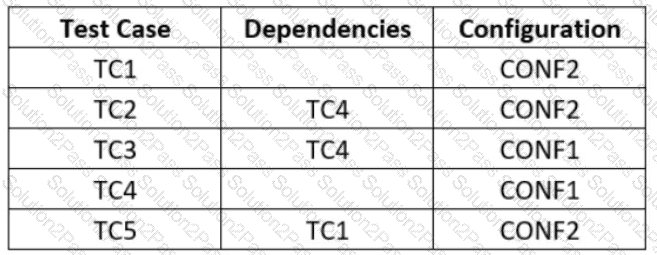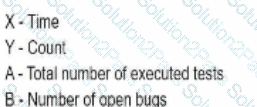CTFL_Syll_4.0 iSQI ISTQB Certified Tester Foundation Level (CTFL) v4.0 Free Practice Exam Questions (2025 Updated)
Prepare effectively for your iSQI CTFL_Syll_4.0 ISTQB Certified Tester Foundation Level (CTFL) v4.0 certification with our extensive collection of free, high-quality practice questions. Each question is designed to mirror the actual exam format and objectives, complete with comprehensive answers and detailed explanations. Our materials are regularly updated for 2025, ensuring you have the most current resources to build confidence and succeed on your first attempt.
Consider the following table, which contains information about test cases from the test management system:

Which ONE of the following optionsorganizes the test cases based on the statement coverage strategy, while considering practical constraints?
A requirement specifies that a certain identifier (ID) must be between 5 and 10 characters long, must contain only alphanumeric characters, and its first character must be a letter. As a tester, you want to apply one-dimensional equivalence partitioning to test this ID. This means that you have to apply equivalence partitioning individually: to the length of the ID, the type of characters contained within the ID, and the type of the first character of the ID.
What is the number of partitions to cover?
The tests at the bottom layer of the test pyramid:
For each test case to be executed, the following table specifies its dependencies and the required configuration of the test environment for running such test case:

Assume that CONF1 is the initial configuration of the test environment. Based on this assumption, which of the following is a test execution schedule that is compatible with the specified dependencies and allows minimizing the number of switches between the different configurations of the test environment?
Which ONE of the following options MOST ACCURATELY describesbranch testing?
A new web app aims at offering a rich user experience. As a functional tester, you have run some functional tests to verify that, before releasing the app, such app works correctly on several mobile devices, all of which are listed as supported devices within the requirements specification. These tests were performed on stable and isolated test environments where you were the only user interacting with the application. All tests passed, but in some of those tests you observed the following issue: on some mobile devices only, the response time for two web pages containing images was extremely slow.
Based only on the given information, which of the following recommendation would you follow?
Which of the following statements is true?
Which ONE of the following options is NOT a test objective?
The following chart represents metrics related to testing of a project that was competed. Indicate what is represented by tie lines A, B and the axes X.Y
A)

B)

C)
D)

A typical generic skill required for the role of tester is the ability to:
The following rules determine the annual bonus to be paid to a salesman of a company based on the total annual amount of the sales made (referred to as TAS).
If the TAS is between 50k€ and 80k€, the bonus is 10%. If the TAS exceeds 80k€ by a value not greater than 40k€, the bonus is 15%. Finally, if the TAS
exceeds the maximum threshold which entitles to a 15% bonus, the bonus is 22%.
Consider applying equivalence partitioning to the TAS (Note: 1k€ = 1000 euros).
Which one of the following answers contain only test cases that belong to the same equivalence partition?
A test manager has started a cycle of testing for an e-commerce application. The reason for testing is the change in the protocol for connecting to the payment gateway because of new regulations. Which of the following correctly names this type of testing?
A test status report should:
Which of the following statements about white-box testing is false?
Which ONE of the following is a characteristic of exploratory testing?
Which ONE of the following options CANNOT be subjected to static analysis?
In which of the following test documents would you expect to find test exit criteria described9
Which of the following statements about the shift-left approach is true?
Which ONE of the following options corresponds to an activity in the testing process in which testable features are identified?
A number of characteristics are given for impact of SDLC on the testing effort.
i.Finishing of requirements review leading to test analysis
ii.Both - static and dynamic testing performed at unit testing level
iii.Frequent regression testing may need to be performed
iv.Extensive product documentation
v.More use of exploratory testing
Which of the following statements is MOST correct?
